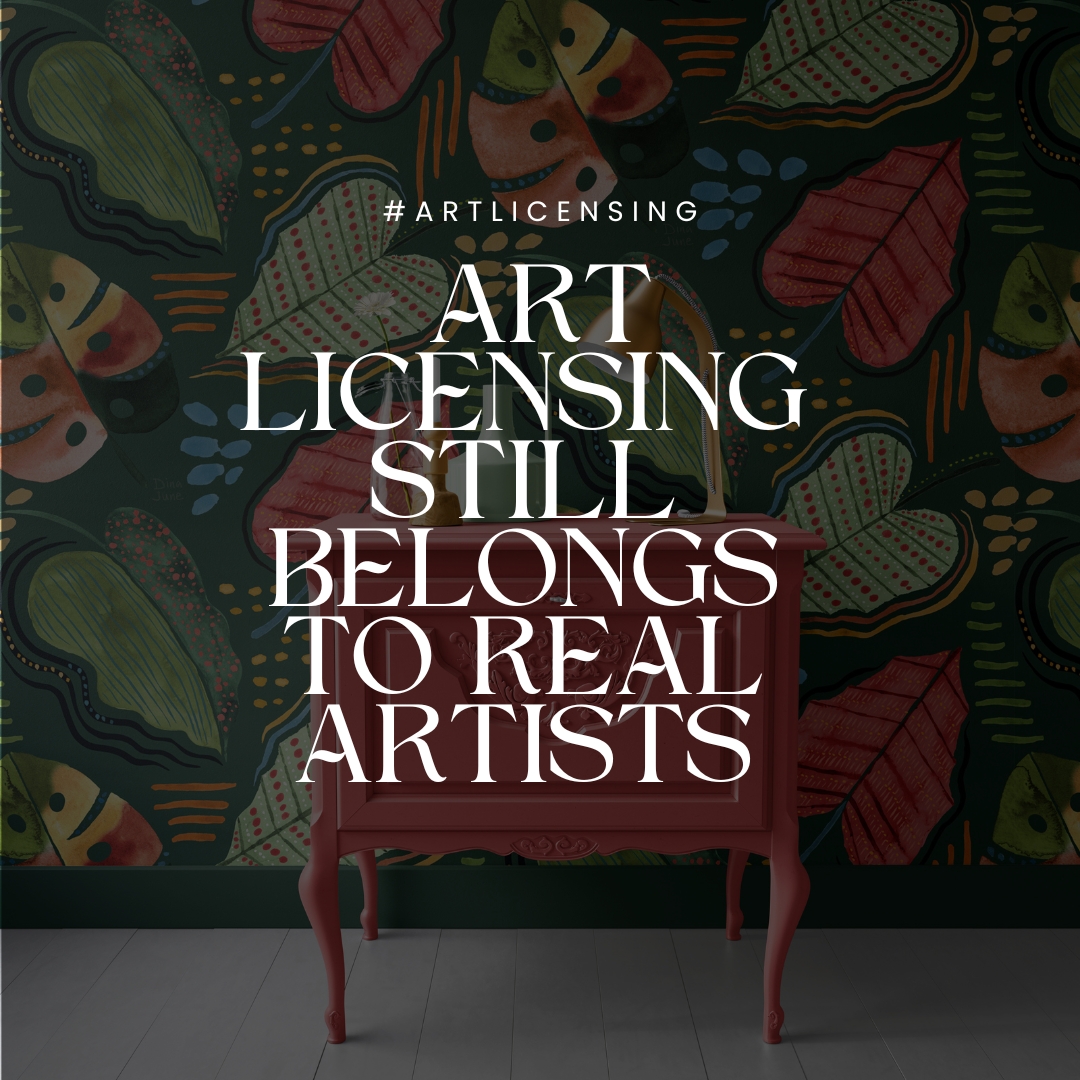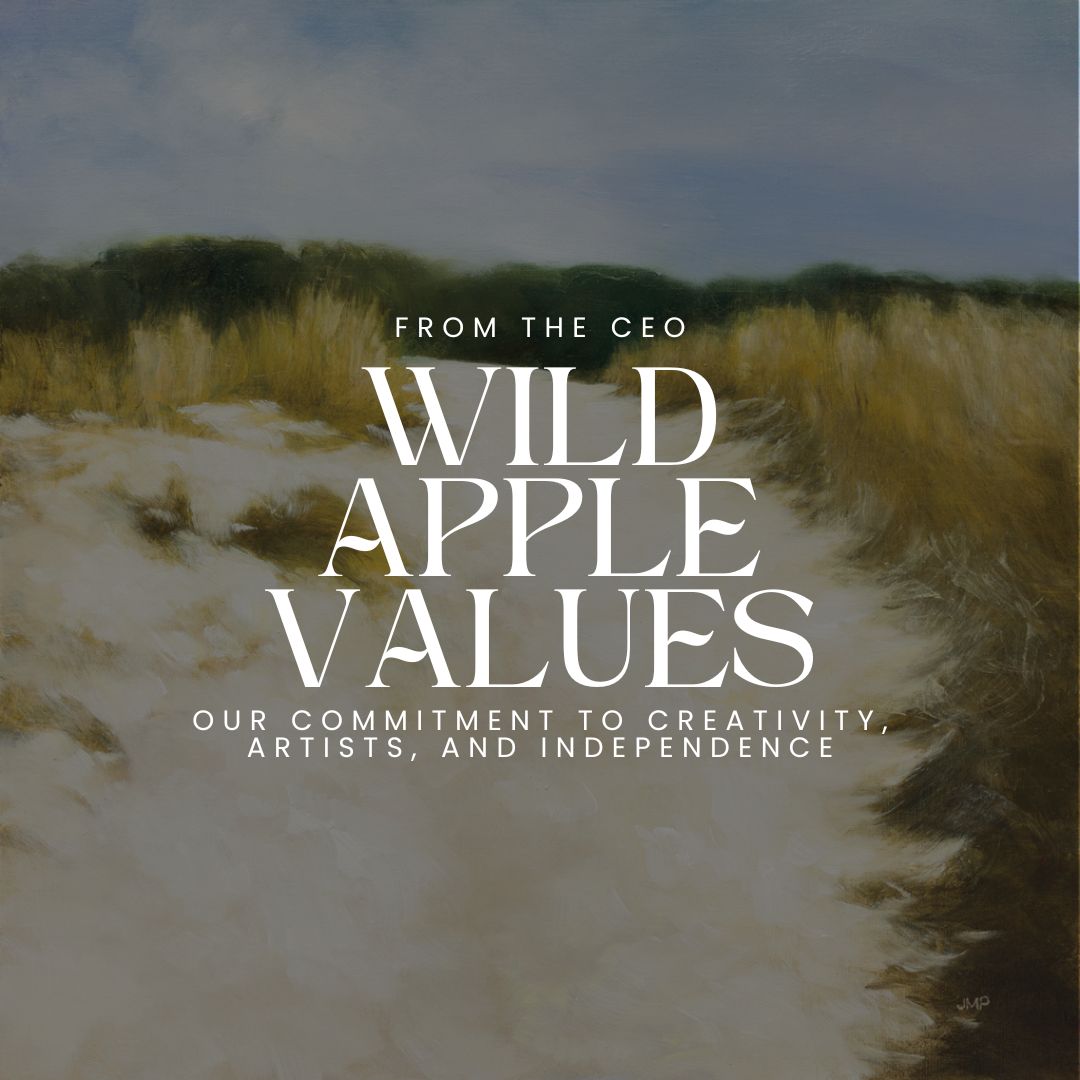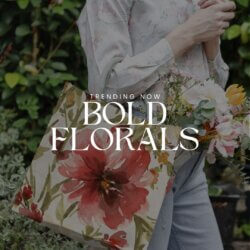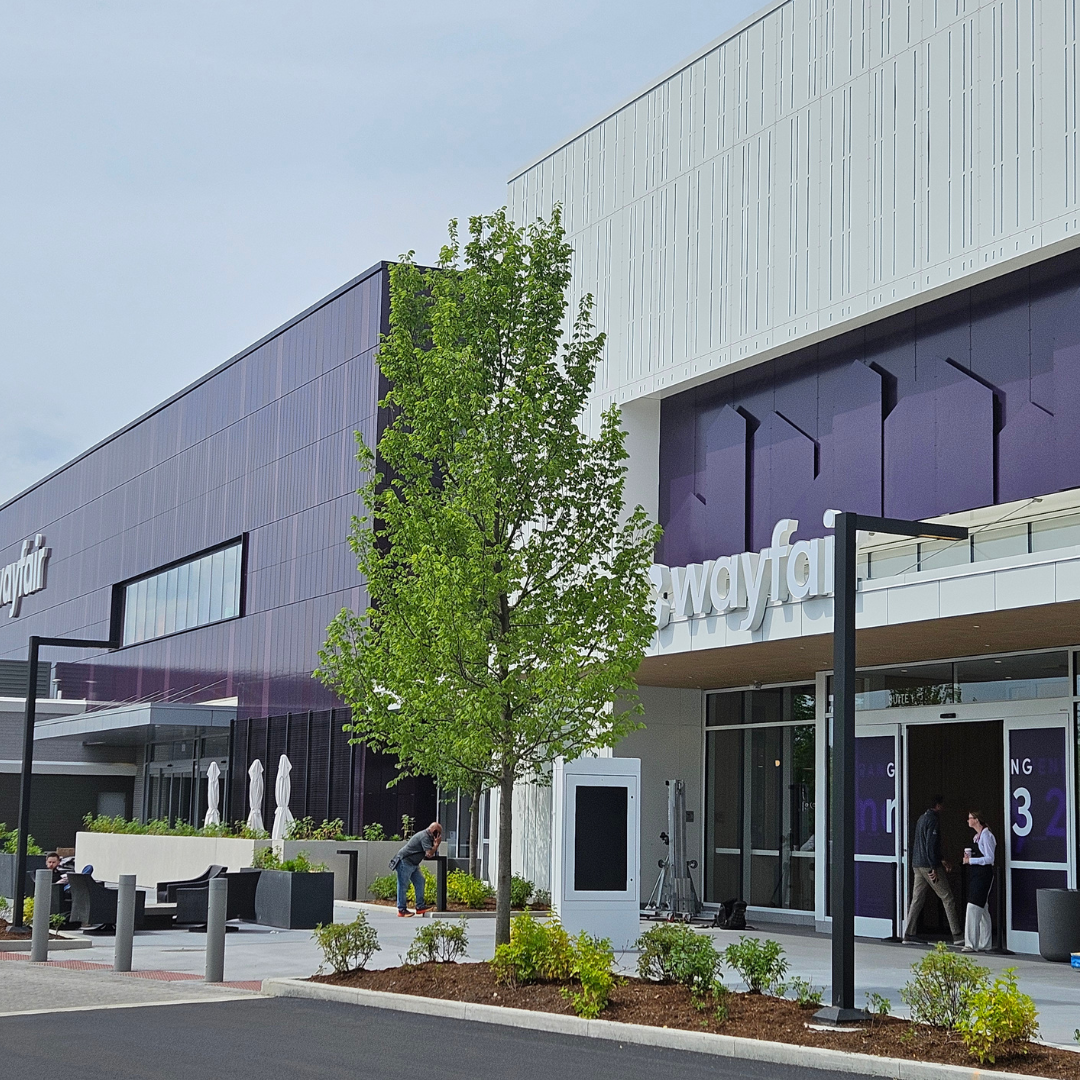
While online shopping offers unmatched ease and a vast selection, there’s something special about the in-store experience that many consumers need and want. Whether it’s feeling the texture of a pillow, testing out a new mattress, or mix and matching dinnerware, the in-person retail experience is something that digital shopping has not been able to replicate. Consumers are telling the industry that they want more than just digital catalogs; they’re seeking tangible, real-world shopping experiences. Rising to meet this demand, leading retailers, including previously online-exclusive platforms, are venturing into physical spaces. A notable example is Wayfair’s New Concept Store which recently expanded into physical retail with their first large-scale in-person concept store in Chicago. Our art has been selling on Wayfair for years through our partners. Visiting this new hybrid retail space gave me new insights into how the integration of online efficiency with the sensory richness of traditional shopping is shaping the future of retail.
“The new Wayfair concept store in Chicago marks an exciting evolution in retail, blending the immediacy of in-store shopping with the convenience of online features.”
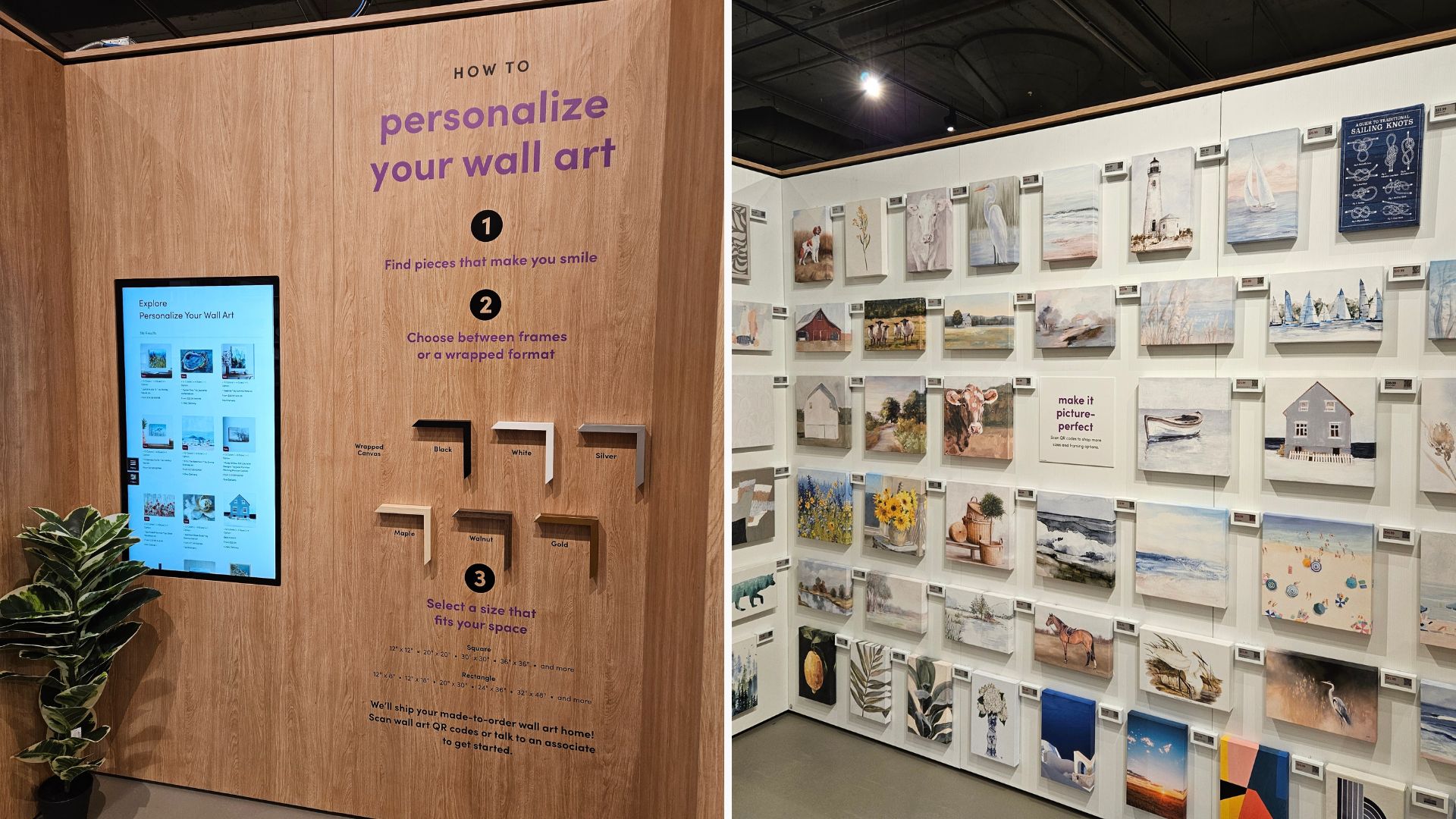
Redefining Retail: Wayfair’s New Concept Store in Chicago
The new Wayfair concept store in Chicago marks an exciting evolution in retail, blending the immediacy of in-store shopping with the convenience of online features. The store showcases 12,000 SKUs, with half available for immediate takeaway and the other half eligible for free 48-hour delivery. This hybrid model satisfies consumers’ desires for quick access and personalized options, like custom sizes and finishes for various products.
The store excels in interactivity. Customers can test and experience products firsthand— enhancing the tactile connection that enhances buying decisions. Not limited to just home décor and furniture; consumers are also given home improvement solutions, including flooring, tiles, appliances and as well as white-glove and installation set up as needed. The store layout, organized by color and based on popular online sales data, simplifies navigation and highlights customer preferences, ensuring a tailored shopping experience.
Let’s talk art.
For wall decor, customers can see walls of art, order prints, choose sizes and finishing treatments. If they don’t see something they love, there are user-friendly touch screens where consumers can browse more art and order directly from the store. Seeing this flexibility for consumers was amazing and again, highlights the personalization and customization that consumers are craving.
Hybrid Commerce as the Future of Retail.
This concept store focuses on hybrid commerce, where physical and digital retail coexist harmoniously. By integrating online and offline elements, stores can cater to varied consumer preferences, making shopping more convenient and personalized. It’s a strategy that supports not just consumer satisfaction but also operational efficiency.
For online brands that align their offerings with market demands, physical stores can significantly enhance business. Studies suggest a “halo effect” where physical stores boost online visibility and sales within the same geographical area. This effect is pronounced among younger consumers who, contrary to the “digital-only” stereotype, show an ever increasing interest towards in-store shopping experiences.
The Rise of ROPO and BOPIS in Modern Retail
The trends of Research Online, Purchase Offline (ROPO) and Buy Online, Pick Up In-Store (BOPIS) are reshaping consumer expectations. These behaviors highlight the need for retailers to adapt and create seamless omnichannel experiences that synchronize their online presence with their physical stores. Successfully implementing these strategies requires a deep understanding of consumer behavior and a flexible approach to retail logistics.
To stay ahead, retailers must leverage technology to enhance the customer experience. Advanced data analytics and AI are crucial for understanding consumer patterns and tailoring services to meet their needs.
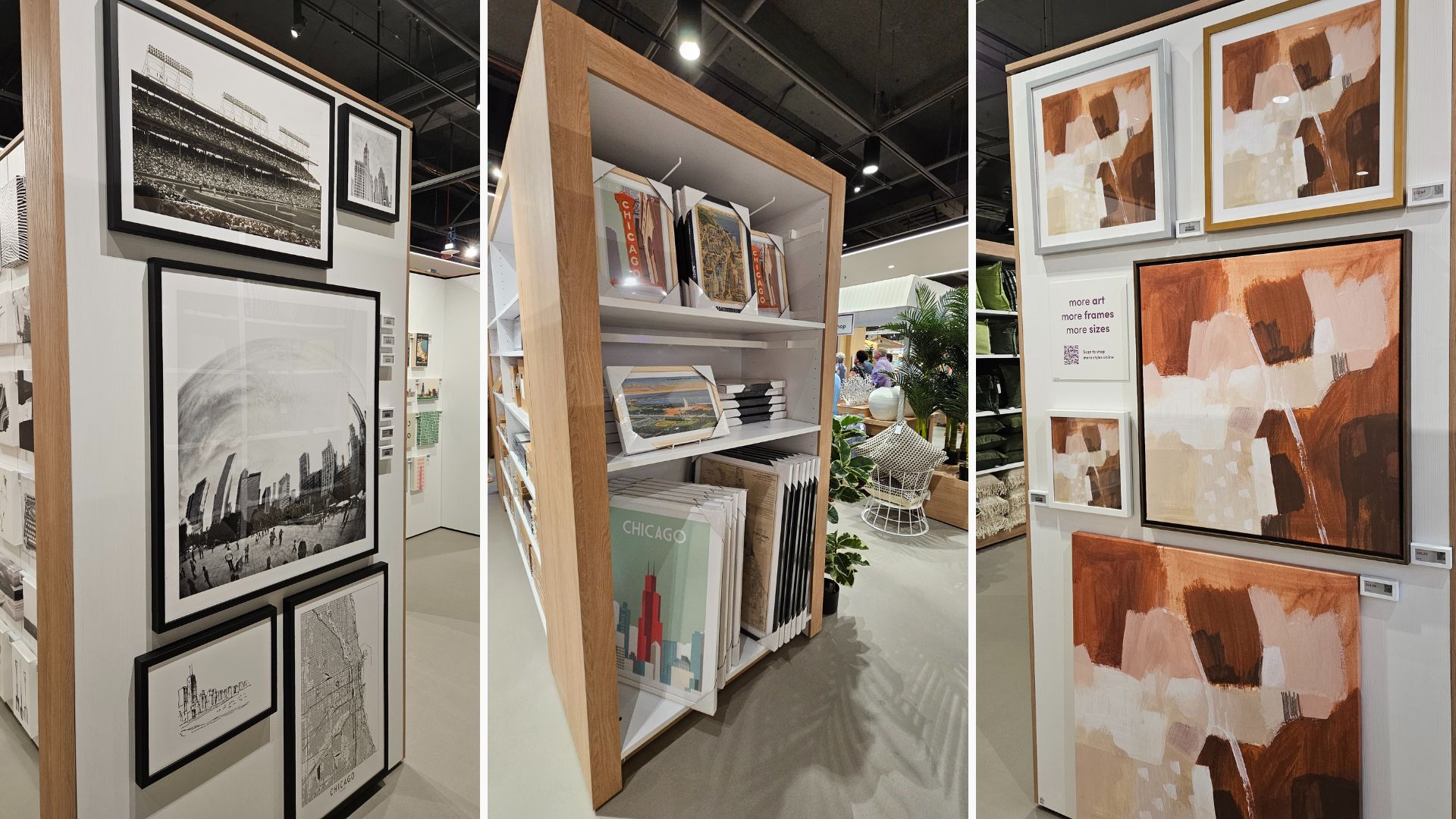
Wild Apple’s Role and Vision in Shaping the Future of Retail
At Wild Apple, we recognize that the intersection of art and retail is not just about filling spaces with beautiful pieces—it’s about creating immersive experiences that connect with consumers and elevate their shopping experience. As a partner to manufacturers and retailers, we are not just about providing art; we believe in actively engaging with and understanding emerging retail trends.
We are dedicated to fostering a collaborative spirit and sharing insights and innovative ideas with our partners. By keeping our finger on the pulse of retail innovations, we can help our partners envision and execute future-focused art retail strategies, empowering them by providing art that enhances their space and aligns with dynamic consumer expectations and the evolving market landscape.
The future of retail is here, and it is vibrant, multifaceted, and driven by innovation. We can embrace these changes to create more dynamic, engaging, and successful retail environments.
About Shawn Harned, CEO of Wild Apple Graphics
Shawn Harned is the CEO of Wild Apple Graphics, a leading art licensing agency renowned for its exceptional creativity and innovative designs. With a passion for the industry and a keen eye for business, Shawn is leading Wild Apple to further success by forging partnerships with top artists and manufacturers worldwide.

